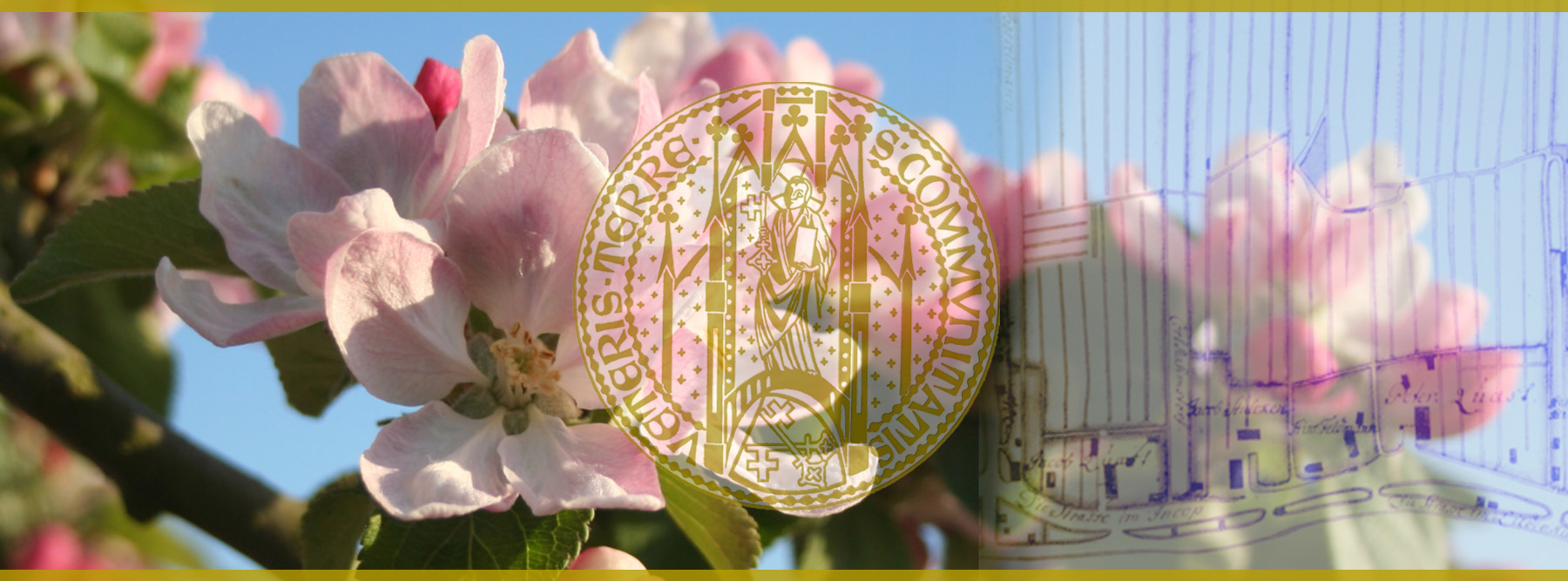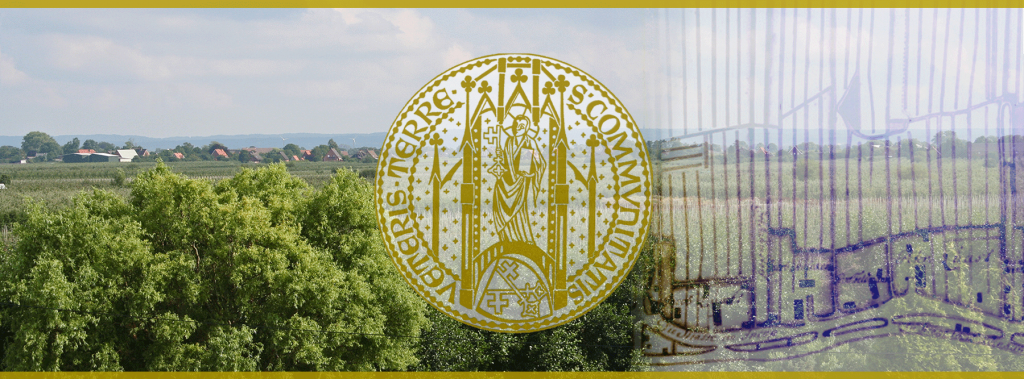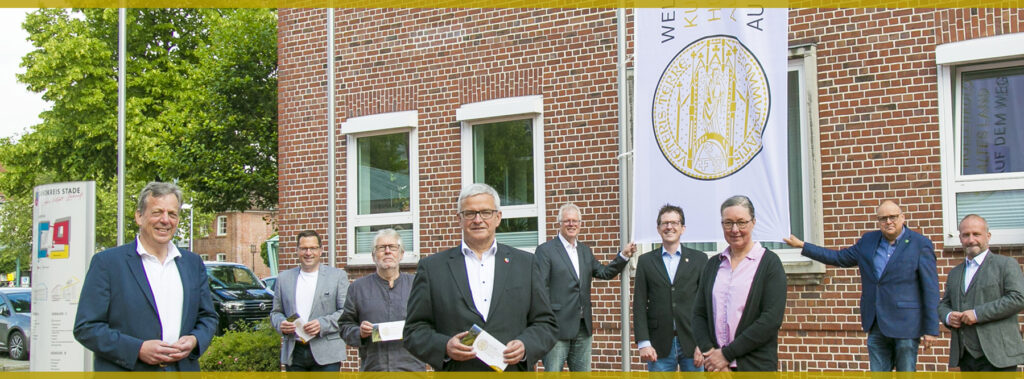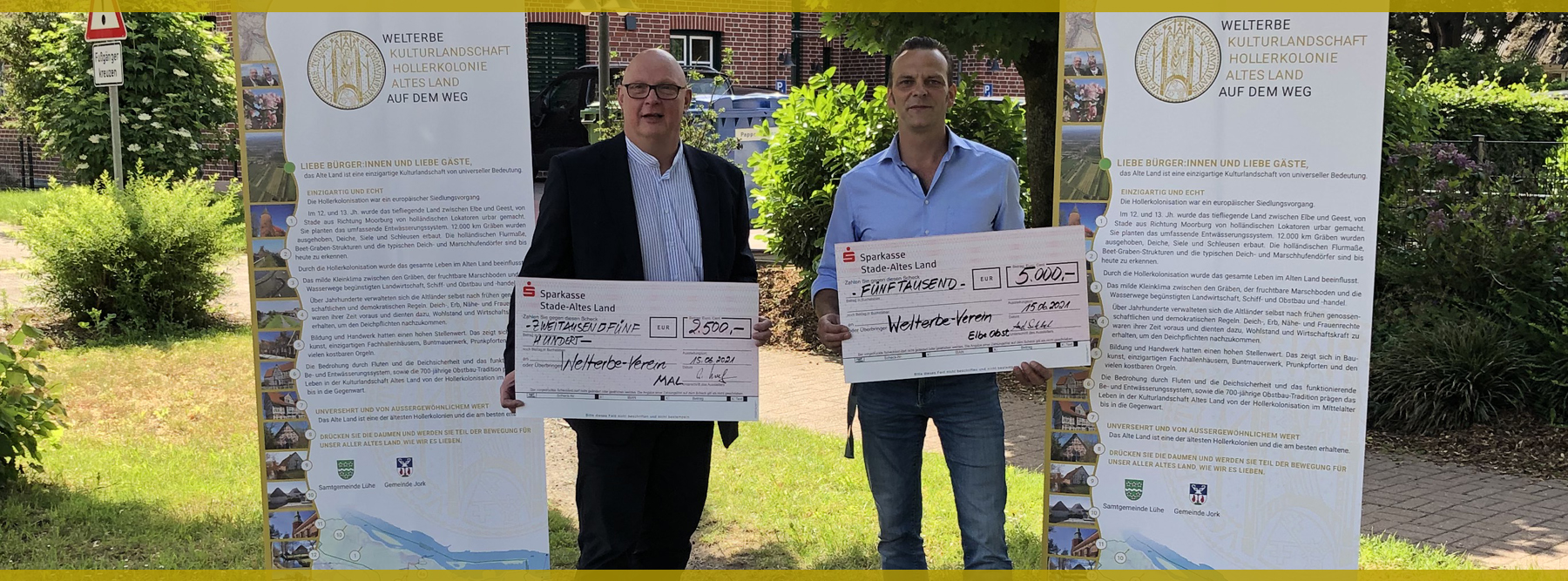THE ALTES LAND IS HEADING FOR WORLD HERITAGE STATUS
Blossoming fruit trees, apples and cherries, impressive half-timbered houses, famous organs…
For centuries, visitors have come to the dykes and marsh yardland villages between Stade and Hamburg.
The Altes Land is unique, impressive and beautiful – but is it a World Heritage Site?
The Altes Land (“The Old Land”) represents a unique and linear cultural landscape which was designed in the 12th and 13th centuries. It is a historical and well-planned cultural landscape which was mostly laid out by Dutch settlers. Due to this Dutch influence, it is also known as a Holler landscape or Cope landscape.
The Holler colony Altes Land is one of many “daughter landscapes” of Dutch settlement culture in Europe.
Its present conservation status is not only better than in other European regions, but also its parent landscapes in the Netherlands.
The Altes Land’s historical and unique cultural landscape is clearly definable on a European level. In addition to this, the protected monuments and the elements of the cultural landscape form its characteristic structures and thereby the area’s distinctive traits.
The Altes Land also constitutes its own economic area – as when it was originally laid out in the High Middle Ages, today its structure still subordinates a linear structure in all areas (management, settlement, infrastructure). The structure of the planned landscaped therefore continues to characterise the local economy and lifestyle to this day.
20 years have already passed since the initial idea that the Altes Land could possess World Heritage potential. The path to World Heritage is a long one.
We are continuing on this path and would be pleased to have you stand by us in increasing the strengths of the Altes Land and opening up opportunities for the region.






